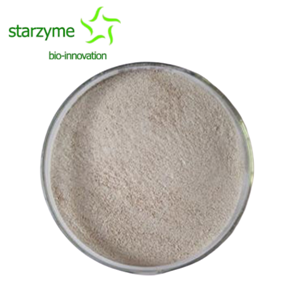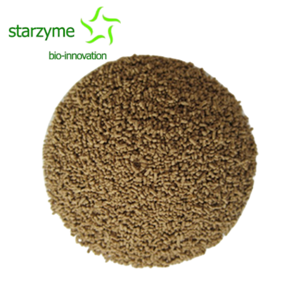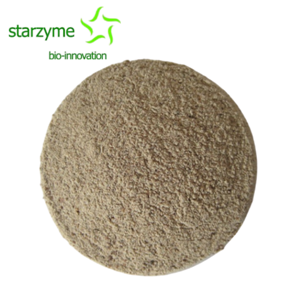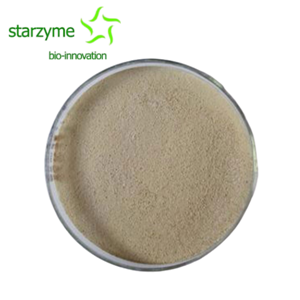Testing Standards for Protease in Enzyme Preparations
ICS 67.220.20
Classification no.: X69
GB/T 23527一2009
People's Republic of China National Standards
Protease Preparations
Issued on: 2009-04-27
Implemented: 2009-11-01
Issued by: People's Republic of China General Administration of Quality Supervision, Inspection, and Quarantine & China National Standardization Management Committee
Foreword
This standard is based on QB 1805 – 1993 (General Testing Method for Industrial Enzyme Preparations) and QB 1805.3 – 1993 (Industrial Protease Preparation).
Appendix B of this standard is a normative appendix, while Appendices A, C, and D are informative.
This standard was proposed by the China National Light Industry Council.
This standard is under the jurisdiction of the Industrial Fermentation Sub-Technical Committee of the National Food Industry Standardization Technical Committee.
This standard was drafted by: Novozymes (China) Biotechnology Co., Ltd., Zhangjia Port Jinyuan Biochemical Co., Ltd., China Food Fermentation Industry Research Institute, Shandong Longda Bioengineering Co., Ltd., Zhaodong Richeng Enzyme Preparations Co., Ltd., Xingtai Xinxin Xiangyu Bioengineering Co., Ltd., Wuxi Saide Bioengineering Co., Ltd., and Beijing Donghua Qiangsheng Biotechnology Co., Ltd.
The main drafters of this standard are: Jingxue Zhang, Yongqi Li, Wei Zhang, Qingwen Guo, Yong He, Bo Yu, Bingyan Wu, Zhenyu Cao, Jin Qian, and Yue Zhang.
Protease Preparations
1. Scope of Application
This standard specifies the terms and definitions, product classifications, requirements, testing methods, inspection regulations, as well as icons, packaging, transportation, and storage of Protease preparations
This standard applies to the production, inspection, and sale of protease preparations obtained from starch (or sugar) as raw materials, fermentation by microorganisms, and purification.
This standard does not apply to protease preparations extracted from animal and plant tissues, but the counting requirements of this standard can be used for reference.
Protease preparations used as food additives and feed additives, in addition to the requirements of this standard, also need to refer to the other regulatory requirements.
2. Normative References
The clauses in the following documents together become the clauses of this standard document through citations. For dated reference documents, all subsequent amendments (not including errata content) or revisions are not applicable to this standard. However, all parties in agreement to this standard are encouraged to study whether these documents are the latest versions. For cited documents without date, the latest corresponding version is applied to this standard.
GB/T 191 Icons for Packaging, Storage, and Transportation
GB/T 601 Chemical Reagent Preparation: Standard Titration Solution
GB 2760 Hygienic Indicators of Food Additives
GB/T 6003.1 Wire Mesh Test Sieves (GB/T 6003.1 – 1997, eqv ISO 3310-1: 1990)
3. Terms and Definitions
The following terms and definitions apply to this standard.
3.1. Protease
An enzyme that cuts peptide bonds inside of protein molecules and turns protein molecules into small molecule peptides and amino acids.
3.2. Protease Activity
Protease activity is expressed in units of protease activity and is defined as 1 g of solid enzyme powder (or 1 ml of liquid enzyme). Under certain temperature and pH conditions, casein is hydrolyzed in 1 min to produce 1 μg of tyrosine, which represents 1 unit of enzyme activity u/g (or u/ml).
4. Product Classification
4.1. By Product Field of Application
1. Class A Products: Enzyme Preparations for Food Industry and Feed Industry
2. Class B Products: Enzyme Preparations for other industries
4.2. By Product Form
The product form is classified into solid enzyme preparations and liquid enzyme preparations.
4.3. By Product’s pH range
Classified into Acidic Protease, Neutral Protease, and Alkaline Protease. See Appendix A for the categories, codes, and production strains of commonly used protease preparations in China.
5. Requirements
5.1. Appearance
1. Solid form: white to yellow-brown powder or granules without agglomeration and deliquescence, and odorless. There is a special fermentation smell.
2. Liquid form: light yellow to tan liquid with a small amount of condensate allowed, and odorless. There is a special fermentation smell.
5.2. Physical and Chemical Requirements
Should meet the requirements of Table 1:
Table 1 Physical and Chemical Requirements of Lipase Preparations
Item | Solid Form | Liquid Form |
Enzyme Activitya, u/g or u/ml ≥ | 50000 | |
Loss on Dryingb, (%) ≤ | 8.0 | — |
Fineness [0.40 mm (39 mesh) Standard Sieve Pass Rate] b, % ≥ | 80 | — |
a: Can be conducted according to the enzyme activity specifications stipulated in the contract between the supplier and buyer. b: Not suitable for granular products. | ||
5.3. Hygienic Requirements
Should meet the relevant national regulations.
6. Testing Method
6.1. Appearance
Weigh 10 g (or 10 ml) of the sample, observe, sniff to make a judgement, and record observations.
6.2. Enzyme Activity
Conduct testing according to Appendix B. Appendices C and D can also be referenced to conduct testing.
6.3. Loss on Drying
6.3.1. Apparatus
6.3.1.1. Electric Drying Oven
6.3.1.2. Analytical Balance: accurate to 0.0001 g
6.3.1.3. Weighing Bottle: 50 mm x 30 mm
6.3.2. Procedure Analysis
Use a weighing bottle dried to constant weight to weigh approximately 2 g of the enzyme sample accurate to ± 0.0002 g. Place it in a 103 ºC ± 2 ºC electric heating oven, remove the cap, and place it next to the weighing bottle on the side. Dry for 2 hours, remove, cover, put in a desiccator to cool to room temperature, and weigh.
6.3.3. Calculation of Results
The loss on drying is calculated according to formula 1:
Formula 1. Loss on Drying
X2 = {(m1 – m2) ÷ (m1 - m)} x 100
Legend:
X2: Dry weight loss of the sample, %;
m1: The mass of the weighing bottle and sample before drying, g;
m2: The mass of the weighing bottle and sample after drying, g;
m: The weight of the weighing bottle, g.
The results obtained are to be rounded to one decimal.
6.4. Fineness
6.4.1. Apparatus
6.4.1.1. Analytical Balance: accurate to 0.0001 g.
6.4.1.2. Standard Sieves: ɸ200 x 50 – 400/250, and meets the regulations of GB/T 6003.1.
6.4.2. Procedure Analysis
Weigh 100 g of solid enzyme sample, accurate to 0.2 g. Put the standard sieve onto the sieve tray, then transfer the weighed enzyme sample onto the standard sieve. Next, cover and shake for 5 minutes (beat the side of the sieve from time to time). Let stand for 2 minutes, remove the upper cover, carefully transfer all the contents of the sieve into a beaker of known mass, and weigh it with a balance.
6.4.3. Calculations
Fineness is calculated according to formula 2.
Formula 2. Fineness
X2 = [(100 – m3) / 100] x 100
X2 = 100 – m3
Legend:
X2: Fineness, %;
m3: Mass of the sieve, g.
The result is expressed as an integer, (in %).
7. Inspection Regulations
7.1. Batch Confirmation
The production unit is responsible for confirming the batch number of the product according to its corresponding rules, and the quality of the products in the batch should be uniform.
7.2. Sampling Regulations & Sample Size
7.2.1. Sampling should be evenly distributed throughout the filling process, or evenly distributed in the finished product after canning.
7.2.2. Appropriate methods should be adopted to ensure the representativeness of sampling and the cleanliness of the sampling site and sampling bottle. Sampling for microbiological testing should be performed aseptically.
7.2.3. See Table 2 for sample size of finished product sampling. The sample size to be sampled can be implemented according to the estimated batch size in Table 2, or it can be determined by the manufacturer and (or) related parties. The batch sampling volume must not be less than 300 ml (or 300 g), and those samples that lack the necessary volume should be added to appropriately in proportion.
Table 2 Finished Product Sampling Size
Batch / Barrel of Box | Sample Size / Barrel or Bag |
< 50 | 2 |
51 – 500 | 3 |
> 500 | 4 |
Note 1: The batch refers to the number of commodity units contained in the batch, in barrels or boxes. Note 2: The sample size refers to the number of sample units contained in the sample, in barrels or bags. | |
7.3. Inspection Classification
7.3.1. Factory (Outgoing) Inspection
7.3.1.1. Before the product leaves the factory, the quality supervision and inspection department of the manufacturer must carry out batch-by-batch inspection in accordance with the provisions of this standard. If the inspection qualifies, and a quality inspection certificate is attached, the product can be shipped.
7.3.1.2. Inspection items: appearance, enzyme activity, loss on drying (solid), and total colonies of Class A products.
7.3.2. Type Inspection
7.3.2.1. Inspection items: all required items in this standard.
7.3.2.2. Under normal circumstances, the type inspection of the same type of product must be implemented at least once a year and must be implemented if one of the following conditions occurs:
a. When there are major changes in the raw (and auxiliary) materials;
b. When changing key processes or equipment;
c. When the production of the new reagent product or the normally produced product is resumed after being suspended for 3 months;
d. When there is a big difference between the factory inspection and the most recent type inspection result;
e. When the national quality supervision and inspection agency needs random inspection according to relevant regulations.
7.4. Judgement Regulations
7.4.1. When the factory inspection and (or) type inspection are qualified, the product quality inspection certificate must be issued by the quality inspection department.
7.4.2. When the factory inspection and (or) type inspection are unqualified, double the sample analysis based on the original batch. If it is still unqualified, the product is judged to be unqualified and must not be shipped.
8. Icons, Packaging, Transportation, and Storage
8.1. Icons
8.1.1. The outer packaging of the product should use the icons that meet the requirements of GB/T 191.
8.1.2. The packaging of the product should be affixed with a firm label. The contents of the icons should include the product name, place of origin, plant name, specifications (enzyme activity), production date, batch or code number, shelf life, etc.
8.2. Packaging
The inner packaging of the product and (or) the inner coating of the packaging container should use the materials approved by the state, and the Class A products should use the materials that meet the corresponding food packaging/food container hygiene standards.
8.3. Transportation
The product should be handled with care during transportation to prevent rain and exposure to sunlight. Transportation vehicles and tools should be clean, non-toxic, and non-polluting. It is strictly prohibited to mix and transport with toxic, harmful, and corrosive substances.
8.4. Storage
The product should be stored in a cool and dry environment. It is strictly prohibited to be stored with toxic, harmful, and corrosive substances.
9. Expiration Date (Shelf Life)
9.1. Under refrigeration conditions of 4 ºC – 8 ºC, the shelf life of the liquid enzyme preparation is 90 days at the minimum. At 25 ºC, the shelf life of the solid enzyme preparation is 180 days at the minimum. The enterprise should specifically indicate the shelf life according the requirements listed above. The measured enzyme activity during the shelf life should not be lower than the indicated enzyme activity.
9.2. Enzyme preparations are produced containing biologically active substances. In addition to the shelf life, the enzyme activity may be reduced during the storage period, but it still has use value.




